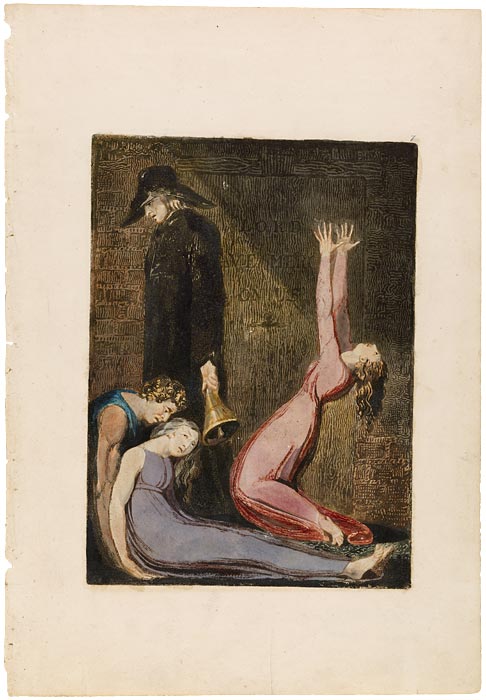
Europe is the second of Blake's great illuminated books concerning the revolutionary spirit of his age. Rather than examining the New World, this Continental Prophecy looks eastward to consider cultures subjected to the strictures of authority embodied by Urizen, who, despite his appearance, represents tyranny.
The frontispiece depicting Urizen dividing the deep with a compass is one of Blake's best–known images. It also exists as a separate print called The Ancient of Days. The Morgan's copy of Europe, one of only nine, was printed in 1794.
IV. The Continental Prophecies
In 1790, Blake moved to Lambeth, where he produced a trilogy of illuminated books called the Continental Prophecies that addressed the politically charged spirit of his age, embodied by the American and French revolutions. Along with Europe and The Song of Los, America depicts the oppression exercised by monarchies and religions represented by Urizen. Although godlike in appearance, Urizen is a legalistic, despotic figure.
Another central figure is Orc, representing the spirit of revolt, who is frequently associated with images of fire. The frontispiece represents the destruction of war, while the text refers to George Washington, Thomas Paine, and other contemporary figures. America exists in only fourteen copies, five of which were colored and printed during Blake's lifetime. The Morgan also owns an uncolored copy.
